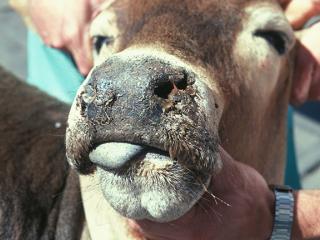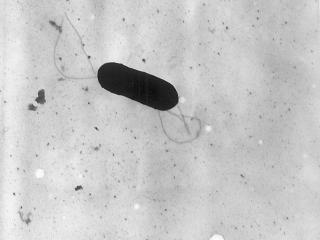Livestock disease investigations protect our markets
Australia’s ability to sell livestock and livestock products depends on evidence from our surveillance systems that we are free of particular livestock diseases. The WA livestock disease outlook – for vets summarises recent significant disease investigations by Department of Primary Industries and Regional Development (DPIRD) vets and private vets that contribute to that surveillance evidence.
Biosecurity reminder – African swine fever
Australia remains on high alert in response to the growing number of overseas countries affected by African swine fever, with the latest outbreak confirmed in Indonesia..
In October, a vet submitted samples from a post-mortem of a finisher pig with a swollen spleen with multifocal, haemorrhagic lesions. Tests were carried out for African swine fever and classical swine fever with negative results.
Vets are urged to contact 1800 675 888 if they see any signs of pig disease consistent with African swine fever.
Please also remind your clients with pigs that it is vital not to feed them meat/food scraps that have had contact with meat (swill feeding) as this could introduce African swine fever and other exotic diseases. For more information on swill feeding and African swine fever, visit the ASF biosecurity webpage.
Recent livestock disease cases in WA
Corneal opacity and nasal and oral lesions in a cow in the South-West


- A private vet visited a South-West cattle property to investigate a 17-month-old down cow with bilateral corneal opacity, conjunctivitis, purulent ocular discharge and nasal and oral lesions. There were no lesions on the tongue or coronary band.
- The cow had been introduced into the paddock three weeks prior and appeared to be the only animal affected in a group of 26.
- As nasal and oral lesions are common signs of the exotic diseases foot-and-mouth disease (FMD) and vesicular stomatitis (VS) lesions, bloods were submitted for exclusion testing.
- Testing for FMD and VS was negative. The results of the exclusion testing will contribute to providing evidence of WA’s freedom from these reportable diseases.
- Samples tested positive for ovine herpesvirus-2, which is a common cause of malignant catarrhal fever (MCF). The laboratory testing results and consistent clinical signs led to a likely diagnosis of MCF.
- MCF in cattle is usually caused by either ovine herpes virus-2 or alcelaphine herpesvirus-1. Ovine herpes virus-2 is normally carried by asymptomatic sheep and is the most common cause of MCF in cattle in Australia. Alcelaphine herpesvirus-1 is normally carried by asymptomatic wildebeest but causes severe disease in cattle. The wildebeest-associated MCF is exotic and is a reportable disease in Australia. Read more on the OIE’s MCF disease card webpage.
- MCF can present with varying signs and severity but often includes bilateral corneal opacity and ocular and nasal discharges that progress from serous to mucopurulent, with swollen lymph nodes and crusting of the muzzle and nostrils.
- MCF is not transmitted between cattle; however sheep, particularly young lambs that shed large amounts of virus, should be separated from cattle to prevent transmission of disease.
Annual ryegrass toxicity in young Merinos
- A private vet investigated deaths and tremors in a mob of six-month-old Merinos.
- Seven sheep had collapsed and died after being moved into yards and another 10 sheep were affected with tremors and hypersalivation.
- No abnormalities were seen on post-mortem, but a faecal sample was positive for annual ryegrass toxin on ELISA, which indicated the presence of the toxin in the gastrointestinal tract. In conjunction with consistent clinical signs and significant pulmonary oedema on histology, ARGT was deemed the most likely cause.
- Subsequently, fresh hay and pasture samples were submitted for quantitative risk assessment and a range of risk ratings from very low to high were detected across samples. It was recommended that animals on low to moderate risk feed should be observed daily and those on high-risk feed or paddocks should be moved to safe feed sources.
- Diseases where neurological signs are present may be eligible for subsidised veterinary investigations – see the DPIRD surveillance incentives webpage.
- Read more about ARGT in the table below.
Neurologic signs in five-month-old lambs
- A producer reported ataxia, recumbency, weakness and convulsions in two five-month-old lambs in a flock of 450 on mixed pasture.
- Histopathology on a fixed brain sample showed microabscessation in the brainstem, highly suggestive of Listeria encephalitis. Listeria monocytogenes infection was confirmed by immunohistochemistry of the lesions and brain tissue culture. ARGT testing was negative.
- The proposed route of infection for Listeria is via retrograde passage of the bacterium along trigeminal nerve axons after it enters through a damaged oral mucosa.
- In ruminants, listeriosis can present in a number of different forms that generally manifest as one of the following: encephalitis, ophthalmitis, septicaemia or abortions.
- While spoiled silage is a common source of infection, listeria can also be found in soil and water. In this case the most likely source of infection was decaying vegetation in the paddock.
- Listeria monocytogenes can affect a number of species, including humans where it occurs in low numbers usually as a food-borne disease. Pregnant and immune-compromised people should avoid contact with potentially infected animals and aborted materials.
- Diseases where neurological signs are present may be eligible for subsidised veterinary investigations – see the DPIRD surveillance incentives webpage.
In summer, watch out for these livestock diseases
Disease, typical history and signs | |
|---|---|
| Haemonchus (Barber’s pole worm) in sheep
Key samples
| |
| Annual ryegrass toxicity (ARGT):
Key samples
|
DPIRD disease investigation summary July-September 2019
In the July-September quarter, the Department of Primary Industries and Regional Development investigated 199 cases of disease in animals, primarily livestock. Submissions were received from both government and private vets providing support for WA’s claims to be free from exotic diseases that could impact trade, and also providing diagnostic information to aid producers in managing disease on their farms.
Reportable disease exclusions:
During the quarter, there were 190 exclusions of reportable diseases across a number of species (see Figure 1). In some cases there were multiple reportable diseases excluded as part of the investigation. Newcastle disease and avian influenza were the most frequently excluded (see Figure 2).
Endemic disease:
| Disease | Not specified | Central Agricultural | Esperance/Goldfields | Northern Agricultural | South West Agricultural | Southern Agricultural |
| Helminthiasis | - | 2 | - | 5 | 5 | 15 |
| Hypocalcaemia | 2 | 5 | - | - | 5 | 12 |
| Enterotoxaemia | 2 | 5 | 1 | 1 | 5 | 9 |
| Coccidiosis | - | - | 1 | 3 | 2 | 13 |
| Ketonaemia | 2 | 4 | - | - | 5 | 8 |
| Disease | Not specified | Esperance/Goldfields | Kimberley | Northern Agricultural | South-West Agricultural | Southern Agricultural | Southern Pastoral |
| Ruminal acidosis | - | 1 | - | - | - | 2 | - |
| Abortion - unknown aetiology | - | - | - | - | 3 (exotic causes of abortion have been excluded) | - | - |
| Bovine theileriosis | - | - | - | - | 1 | 2 | - |
| Copper deficiency | - | 1 | - | - | 2 | - | - |
| Helminthiasis | 1 | - | - | - | 2 | - | - |
New disease investigation resource for vets in the field
The Australian Department of Agriculture in partnership with CSIRO have recently published an Emergency Animal Disease (EAD) Field guide for Australian veterinarians. Vets in the field may be the first to be faced with unusual disease signs or an outbreak of disease in animals, and this resource offers information on recognising and investigating possible EADs, biosecurity and reporting. You can access the guide on the Australian Department of Agriculture’s Outbreak website.
Emergency animal disease contacts during the Christmas closure
This is the final issue of the WA Livestock Disease Outlook for 2019. The next issue will arrive in your inbox in February 2019. Until then, we wish you all a restful and safe holiday break.
DPIRD offices will be closed from Tuesday 24 December 2019 to Wednesday 1 January 2020 inclusive. If you suspect an emergency animal disease during that period, please ring the hotline on 1800 675 888.

